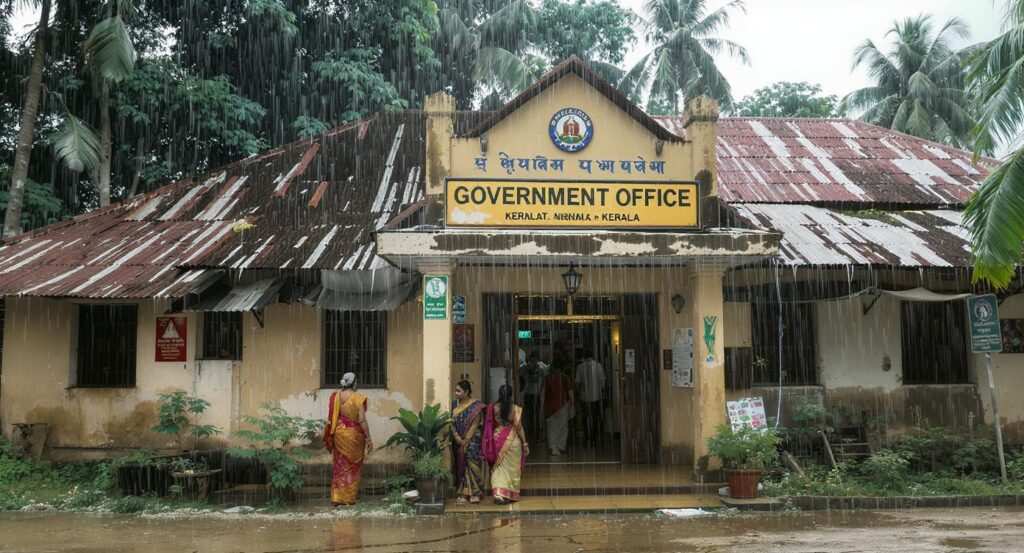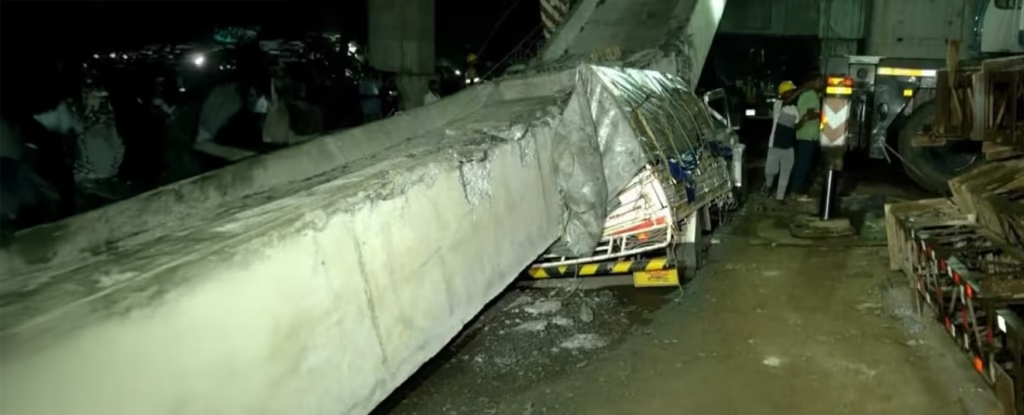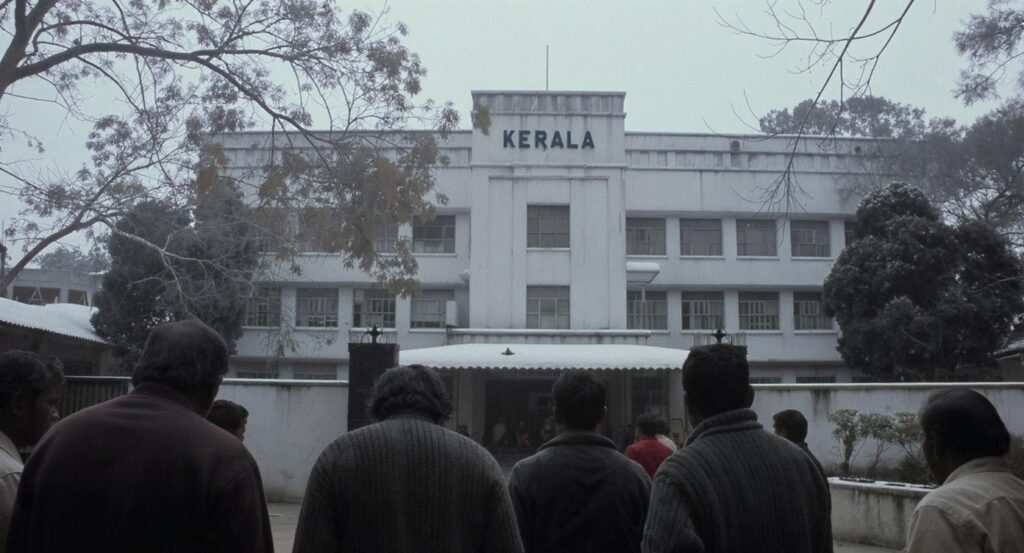A Ticking Time Bomb: Kerala's Government Buildings Cry for Urgent Safety Overhaul
The recent tragic death of a 56-year-old woman, crushed under the debris of a collapsing building at the Kottayam Government Medical College Hospital, has sent shockwaves across Kerala. This incident, however, is not an isolated one. It is a grim symptom of a deeper, more systemic malaise: the alarming lack of structural safety and robust emergency response mechanisms in the very buildings that are meant to serve the public. From hospitals and government offices to bustling bus stations, a significant portion of Kerala’s public infrastructure appears to be in a state of perilous neglect, posing a constant threat to the lives of ordinary citizens.
The Kottayam incident, which also left two others injured, has cast a harsh spotlight on the casual approach of authorities towards public safety. Eyewitness accounts and media reports suggest a shocking delay in the rescue operations, allegedly stemming from initial dismissals by state ministers that the collapsed portion of the 68-year-old building was unused. By the time rescue efforts were intensified at the persistent pleas of the victim’s daughter, it was tragically too late. This has led to widespread public anger and accusations of gross negligence, not just in maintaining the building but also in the critical moments following the disaster.
The Cracks in the System: A Widespread Affliction
While the Kottayam collapse has grabbed headlines, it is merely the latest in a series of incidents that underscore the precarious condition of many government-owned structures. Just days before, a 40-year-old building in Thrissur collapsed, killing three migrant workers. Investigations into such incidents often reveal a disturbing pattern of non-existent or fraudulent structural fitness certifications, a lack of regular maintenance, and a blatant disregard for safety regulations.
The responsibility for the upkeep of most of these buildings lies with the Kerala Public Works Department (PWD). While the PWD has a detailed manual that stipulates annual inspections for major buildings, the on-ground reality appears to be a far cry from the prescribed protocols. The critical question that emerges is: are these inspections being conducted diligently, and if so, what are the findings? The lack of transparency and publicly available data on the structural integrity of government buildings is a major cause for concern.
Furthermore, the issuance of structural stability certificates has come under scrutiny. The case of the Thrissur building collapse, which had received a stability certificate just six months prior, raises serious questions about the competency and integrity of the certifying authorities. It points towards a potential nexus that prioritizes convenience and cost-cutting over human lives.
The Importance of Safe Public Spaces
Public service buildings are the cornerstones of a functioning society. They are spaces where citizens access essential services, seek medical care, and commute. Ensuring the safety of these buildings is not just a matter of regulatory compliance; it is a fundamental duty of the state. The constant fear of a collapsing roof or a fire hazard in a government office or hospital not only endangers lives but also erodes public trust in governance. For the common person, a visit to a government building should not be a life-threatening gamble.
From Delayed Rescue to Proactive Prevention: A Call for Action
The accusations of a delayed rescue in the Kottayam incident highlight a critical gap in our emergency response framework. While Kerala has a State Disaster Management Authority (SDMA) and a Disaster Management Act, the efficiency of the response on the ground, especially in urban settings, is often hampered by a lack of coordination, inadequate equipment, and a reactive rather than a proactive approach.
To avert future tragedies and restore public confidence, the Kerala government must take immediate and decisive action on multiple fronts:
1. Comprehensive Structural Audit and Public Disclosure:
An immediate and transparent structural audit of all government buildings, including hospitals, offices, schools, and bus stations, must be initiated.
The findings of these audits, including the list of buildings deemed unsafe, should be made publicly available. This will create pressure for timely remedial action and allow citizens to make informed decisions.
2. Strengthening the PWD and Ensuring Accountability:
The PWD’s building maintenance wing must be empowered with adequate resources and manpower to conduct regular and thorough inspections as mandated by its own manual.
A system of accountability must be established, holding officials responsible for any lapses in maintenance or for issuing fraudulent fitness certificates.
3. Revamping the Safety Certification Process:
The process of issuing structural stability certificates must be made more stringent and transparent. Third-party audits by credible and independent agencies should be made mandatory for all public buildings.
4. Enhancing Rescue Capabilities and Drills:
The State Disaster Response Force (SDRF) and local fire and rescue services need to be better equipped and trained for urban search and rescue operations in collapsed structures.
Regular mock drills should be conducted in all public buildings to ensure that both the staff and the emergency response teams are well-prepared for any eventuality. Building-specific disaster management plans should be developed and practiced.
5. Empowering Local Bodies:
Local self-government institutions, which are the closest to the people, should be given a more active role in monitoring the safety of public buildings within their jurisdiction and reporting any concerns to the higher authorities.
The Human Cost of Inaction
The death of an innocent woman in Kottayam is a stark reminder of the human cost of administrative apathy. It is a tragedy that could have, and should have, been prevented. For the common citizen, who relies on public services for their daily needs, the safety of the buildings that house these services is non-negotiable. It is imperative that the Kerala government moves beyond mere token investigations and political rhetoric. What is needed is a tangible and time-bound action plan to ensure that every government building in the state is a safe space for its citizens. The lives of the people of Kerala depend on it.




